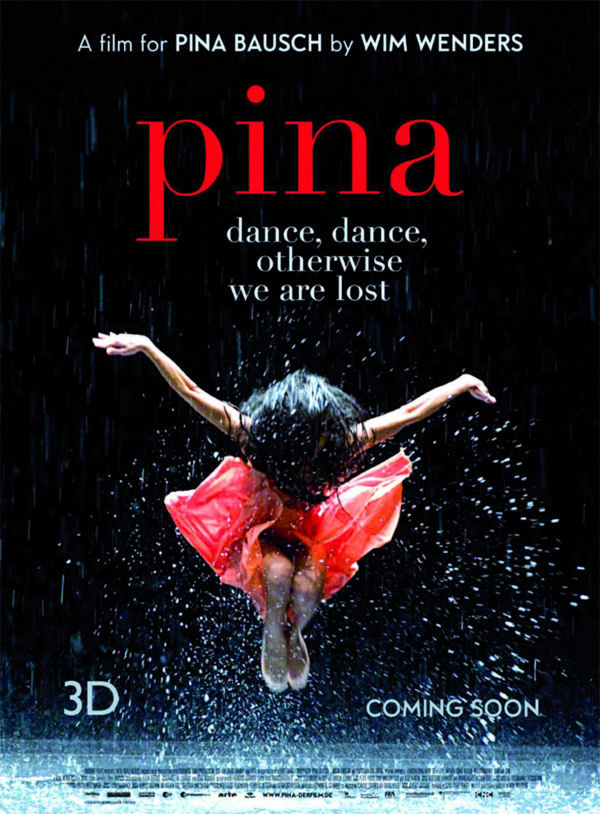When famed German choreographer Pina Bausch died in 2009, she was collaborating with filmmaker Wim Wenders on a documentary about her art and career.
Thus the movie becomes a sort of elegy for and appreciation of Bausch.
Wenders went ahead with the project, a collection of some of Bausch’s most famous pieces, performed by her company of long standing and filmed in 3-D (Wenders may have gotten the idea of a 3-D doc from his old pal Werner Herzog, whose 3-D "Cave of Forgotten Dreams" is up this year for a best documentary feature Oscar).
I knew of Bausch but had never seen any of her work. After “Pina,” though, I’m a fan.
Actually, calling Bausch a choreographer is a bit misleading. She didn’t so much do dance pieces as theater incorporating dance-like movements and elaborate sets. She relied less on conventional steps than on a sort of rhythmic thrashing. Often in a Bausch piece arm and hand movements are more important than legs and feet.
The documentary begins with a long excerpt from Bausch’s version of Stravinsky’s “The Rite of Spring,” performed on a stage covered in dirt which, during the course of the dance, covers the cast members until they seem as begrimed as coal miners leaving the pit after a long shift.
Another piece that gets much attention here is “Cafe Muller,” in which a bunch of modern urban characters collide in a stark restaurant setting, sometimes interacting with each other, sometimes moving the chairs and tables out of each other’s way…it's sort of like being in a huge pinball machine.
And then there’s “Full Moon,” performed on a stage dominated by a huge rock and featuring steady rain and a “lake” of real water through which the dancers slide, run, leap and roll.
Bausch’s work, we soon realize, was just the opposite of lyrical. Her dancers often move like windup toys, repeating the same motions over and over, frequently with absolutely no facial expression.
It’s hard to describe. But watching “Pina” I couldn’t shake the feeling that in Bausch’s hands, dance becomes an eloquent philosophical statement.
She tended to keep her favorite dancers into their 50s and 60s…obviously she was more interested in their personalities and ability to perform carefully controlled movements than in the usual dance pyrotechnics that only can be executed by young bodies.
Bausch was often concerned with sexual relationships and the oppression of women, but she could be funny as well. One number has a man doing a sort of soft shoe while a frantic Jack Russell Terrier nips at his heels.
While several of these dances are performed on the stage of the theater where Bausch worked for many years, Wenders has chosen to place others in various urban settings: on an elevated train, on street corners, in a dark railway tunnel, a park, an abandoned factory, a massive quarry, a pool full of children swimming laps.
Interspersed between these numbers are reminiscences by members of her company. One woman says that in 20 years of dancing, Bausch made only one suggestion to her: “You have to get crazier.”









